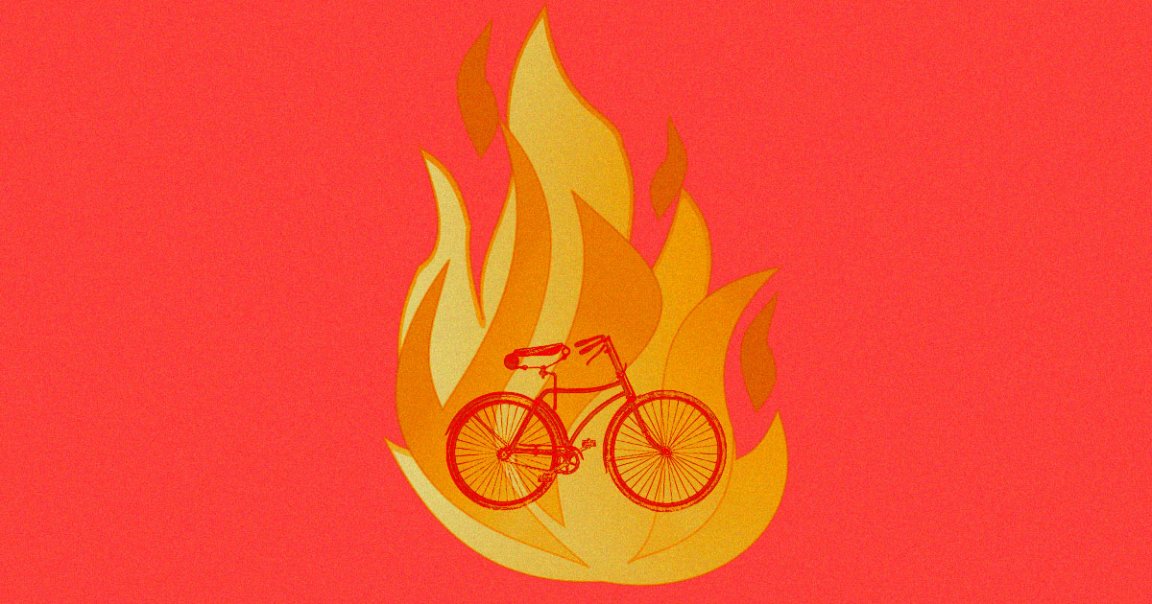
Down in Flames
Lyft can’t seem to keep its electric bicycles on San Francisco streets.
In April, the company pulled its e-bikes in the city because their sensitive brakes were sending riders flying over the handlebars. Lyft then sued San Francisco in early June over a contract dispute, delaying the return of the bikes until the pair reached a temporary resolution earlier this month.
And now, just two weeks after redeploying its e-bikes in the Bay Area, Lyft is pulling them again — this time because they’re spontaneously catching fire.
Packing Heat
On Wednesday, the San Francisco Examiner wrote that at least two of Lyft’s e-bikes have apparently caught fire in the past week.
A source who wished to remain anonymous witnessed one of the fires on Wednesday, while San Franciscan Zach Rutta tweeted a photo of the charred remains of the other on Saturday.
The San Francisco Fire Department responded to Wednesday’s incident and determined that it was a “battery pack issue,” spokesperson Jonathan Baxter told the SF Examiner.
Halt and Catch Fire
Lyft said in a statement that it is “temporarily making the e-bike fleet unavailable to riders while we investigate and update our battery technology.” However, it didn’t clarify whether it will pull all of the e-bikes from the streets or leave them parked but disabled.
The latter option could prove unwise given that both fires appeared to occur when the e-bikes weren’t in use. But as Supervisor Vallie Brown pointed out to the SF Examiner, a parked e-bike catching fire is better than the alternative.
“Biking alone can be hard and unsafe,” she said. “The last thing you need is a flaming bike as you’re riding down the street.”
READ MORE: Lyft halts e-bike program after bicycle batteries catch fire in SF [San Francisco Examiner]
More on Lyft: Uber and Lyft Caused Half of San Francisco’s New Traffic Congestion Since 2010